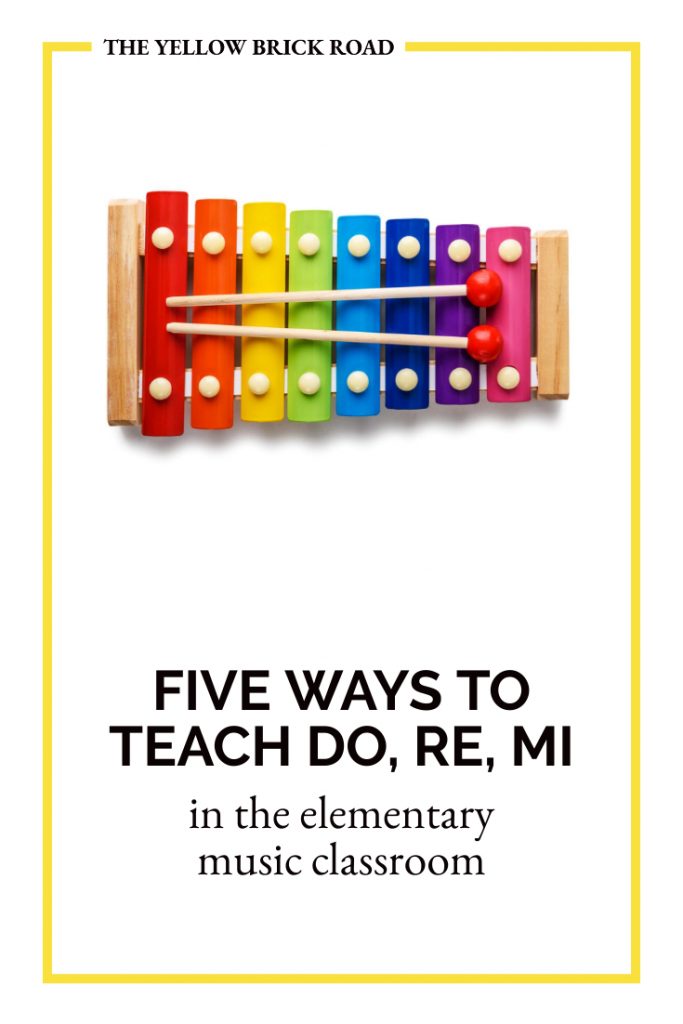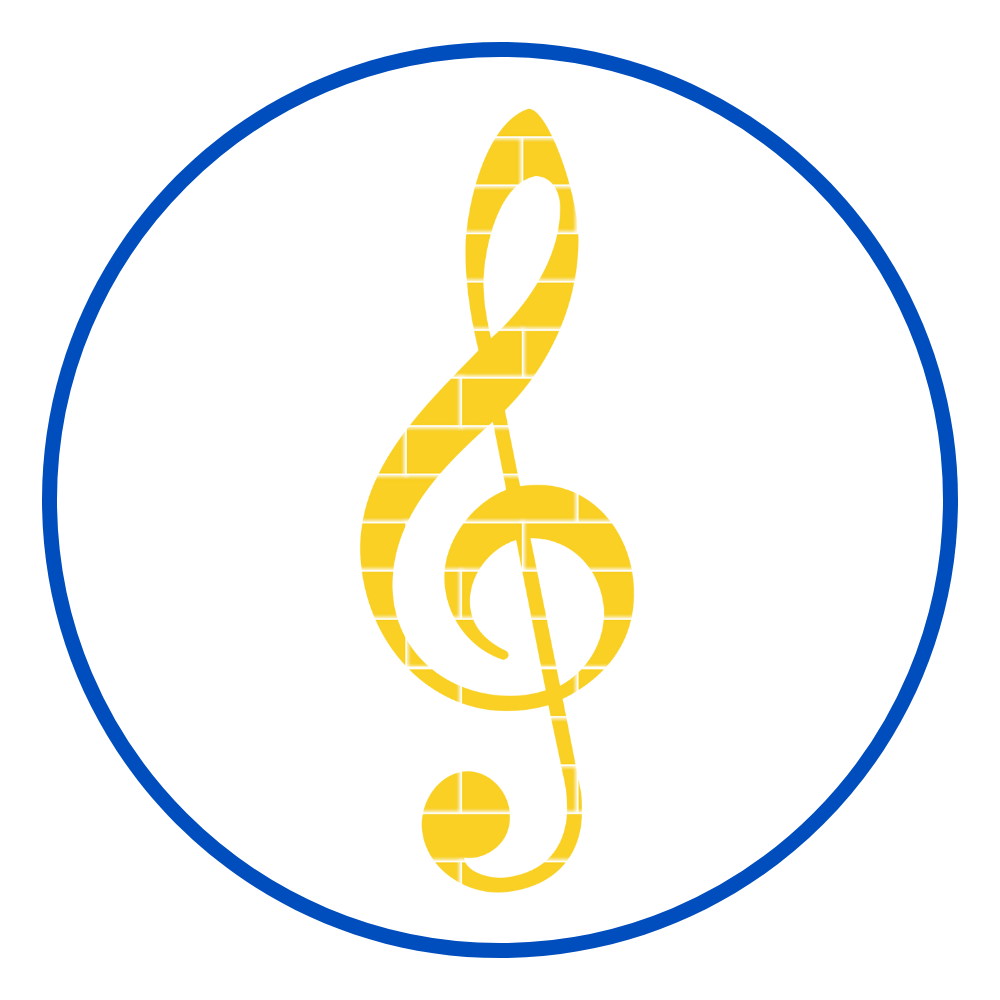Thanks to the Sound of Music, we know that “when we sing, we begin with do, re, mi”. Whether you introduce these pitches first (as you would with the Feierabend Method) or later on (like with Kodály), do, re, and mi are key building blocks within Western music literacy. Today, I’m sharing five ideas for teaching do, re, and mi through visual and hands-on activities.
XYLOPHONES
Xylophones are great for visually reinforcing the concept of high and low, as well as do, re, and mi. Here’s how:
- Take a soprano xylophone and set it upright, so that the low bars are toward the floor and the high bars are toward the ceiling.
- Let students take turns coming up to the xylophone and doing a glissando up or down.
- As they play, ask students what they noticed about the notes. Do the notes sound higher at the top or at the bottom?
- Then, remove all bars except do, re, and mi.
- Have students come up and play these notes as well. Ask them again what they notice.
- Finally, play and sing do, re, and mi and have your students echo you.
This is an activity you can do as part of a review, after students have experienced singing and moving to do, re, and mi. It’s great for students who prefer visuals, and it allows them to experience a familiar instrument in a new way.
CLOSET KEY
The Closet Key is a fun game and song for students to practice do, re, and mi. You can read the directions for the game and download free printables for it HERE. You can also watch the free video I created using a pitch ladder HERE. The video is one I created for my resource: Basics of Solfége with Do, Re, and Mi.
WATER GLASSES
I remember my students giving me a strange look the day that I presented water glasses to them. Here’s how I did it:
- I got six water glasses, a spoon, and a large pitcher of water. Towels would be a good idea too!
- The glasses need to be the same size and extremely sturdy since students will be tapping them with a spoon.
- I pour water into three of the glasses until I created the pitches of do, re, and mi. I set these glasses aside.
- I placed the three remaining empty glasses, along with the pitcher of water and the spoon on a short table in front of the classroom.
- After students sat down, I tapped each of the empty glasses with the spoon. Then, I asked them what they noticed about the sound. Was it the same? Different?
- Then, I poured a different amount of water into each glass and tapped them again. Again, I asked them what they noticed.
- I had students come to the front and pour water in or out of the glasses and tap them with the spoon.
- As students continue to do this, they’ll catch on to the idea that less water equals a higher sound and vice versa.
- After at least half of the students had played the water glasses, I brought the glasses I’d set aside to the front.
- I asked what they thought they would hear, and they easily predicted the outcome.
- I sang and played do, re, and mi, and had the students echo my patterns.
- Finally, I had the rest of the students come up and play their own patterns, while the class echoed them.
Check out this video for a more colorful demonstration.
HOT CROSS BUNS
Hot Cross Buns is a good song to review Do, Re, and Mi using instruments. Recorder, Boomwhackers™, handbells, and Orff instruments are all great options for this. If your older students need help following along to the standard notation while playing recorder, you can watch the video for free HERE. This video is one I created for my resource: Basics of Solfége with Do, Re, and Mi.
CURWEN HAND SIGNS
Have students sing a known song using Curwen Hand Signs. I created a video recently, which you can find in my Basics of Solfége with Do, Re, and Mi. The video shows the song Sailor, Sailor on the Sea using Curwen Hand Signs. If you don’t already own my Basics of Solfége with Do, Re, and Mi, you can watch the video for free HERE.
